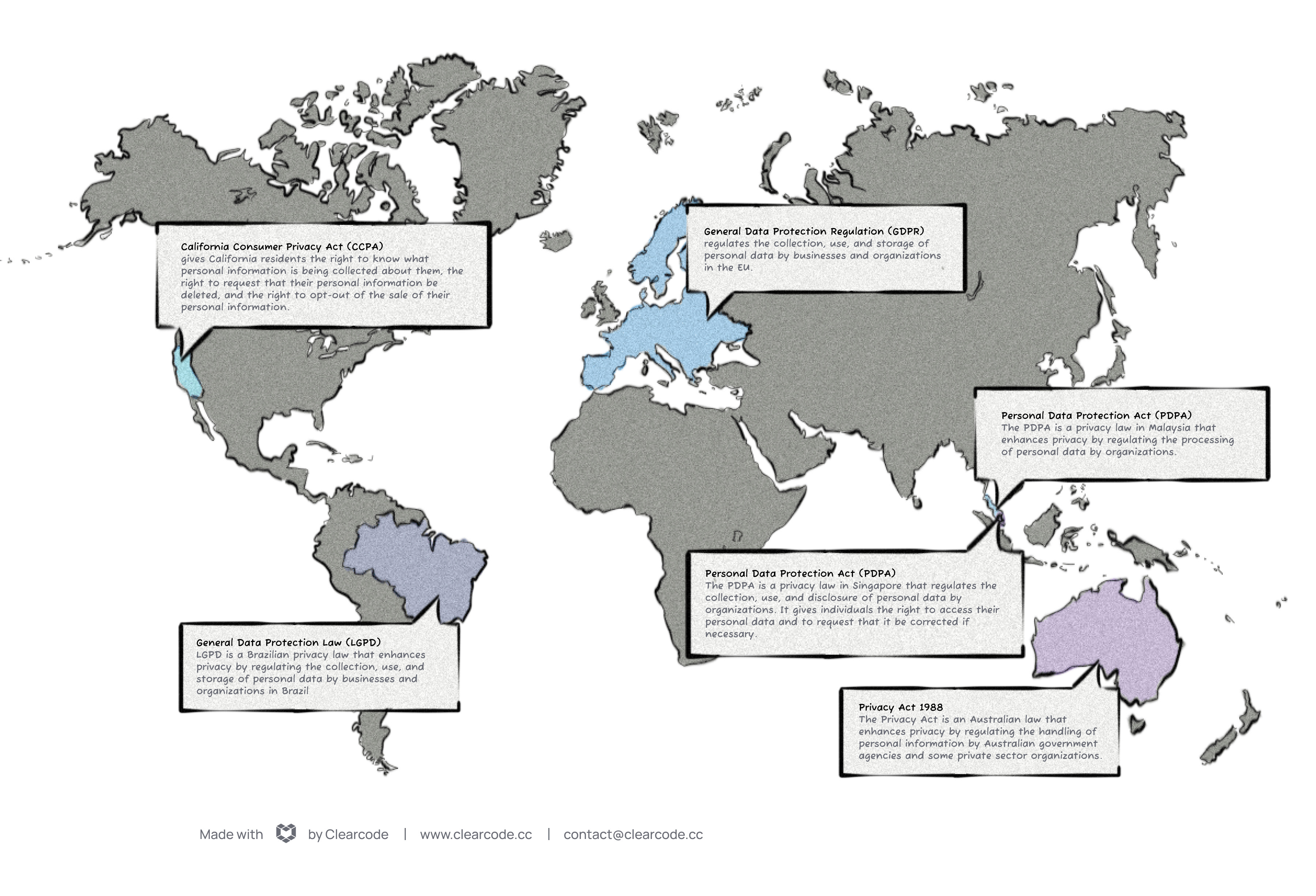Privacy-enhancing technologies (PETs) are a set of tools and techniques designed to protect individual privacy and personal data. These technologies are particularly relevant to the advertising technology (AdTech) industry, which relies heavily on user data to display target and personalized ads and measure their effectiveness.
In this blog post, we’ll explore the benefits of PETs in AdTech and the challenges that come with implementing them.
This is our second article on the topic of privacy-enhancing technologies in AdTech. If you want to learn what PETs are, what examples of PETs exist in AdTech, why and how they are used, and what the future holds for them, then read our blog post: What Are Privacy-Enhancing Technologies (PET) In AdTech? And if you want to know why companies should be looking at implementing privacy-enhancing technologies (PETs) into their businesses, read Clearcode’s piece in Exchange Wire’s Industry Review 2023.
Key Points
- Privacy-enhancing technologies (PETs) are technologies designed to protect user privacy while still enabling data collection and analysis. They can include techniques such as encryption, anonymization, and differential privacy.
- Thanks to PETs, advertisers can target specific audiences without collecting or sharing personal data. This can improve user trust and reduce the risk of data breaches or misuse.
- PETs can also help advertisers and publishers comply with privacy regulations, such as GDPR and CCPA.
- Advertisers can use PETs to gather insights about user behavior and preferences without exposing personal data. This can lead to more effective ad targeting and a better user experience.
- PETs can also benefit publishers by allowing them to monetize their content without compromising user privacy. By using PETs to collect non-personal data, publishers can offer more relevant ads to their audiences without risking user trust.
- While PETs can offer many benefits, they are not a silver bullet for privacy concerns in AdTech. Companies must still be transparent about their data collection practices and ensure that they are using PETs effectively to protect user privacy.
The Benefits of Privacy-Enhancing Technologies (PETs) In AdTech
Protecting Personal Information
One of the main benefits of PETs in AdTech is securing personal information. PETs ensure that user data is collected, processed, and stored securely, reducing the risk of data breaches and unauthorized access. This not only protects the privacy of individuals but also helps companies avoid costly lawsuits and reputational damage.
Examples of PETs that protect personal information include:
- Anonymization techniques — to remove personally identifiable information (PII) from user data, such as names, addresses, and phone numbers.
- Differential privacy — to add noise to data to make it difficult to identify individual users.
- Homomorphic encryption — to process encrypted data.
We Can Help You Build an AdTech Platform
Our AdTech development teams can work with you to design, build, and maintain a custom-built AdTech platform for any programmatic advertising channel.
Maintaining User Trust
PETs can help companies build and maintain user trust by providing transparent data collection and processing practices. By being transparent about how data is collected and used, companies can show that they respect user privacy and are committed to protecting their data.
Things that help maintain user trust in the context of privacy-enhancing technologies include:
- Privacy policies — AdTech companies can explain their practices of data collection and thus give users control over their data.
- User consent — AdTech companies can obtain user consent through opt-in or opt-out mechanisms, depending on the type of data being collected.
- Data minimization — AdTech companies should only collect the data necessary to provide their services.
Compliance With Regulations
PETs can help companies comply with privacy regulations such as the General Data Protection Regulation (GDPR) and the California Consumer Privacy Act (CCPA). These regulations require companies to implement specific privacy protections and disclose how user data is collected and used.
PETs can help companies meet these requirements and avoid fines and legal penalties.
Companies can use differential privacy algorithms in their data analysis to extract valuable insights while preserving individual privacy. By aggregating and anonymizing sensitive data, these algorithms prevent the identification of individual users. This approach helps companies meet privacy law requirements like GDPR and CCPA, reducing the risk of fines and legal consequences while safeguarding user privacy.
Examples of laws that regulate the collection, storage and use of data:
- General Data Protection Regulation (GDPR) — regulates the collection, use, and storage of personal data by businesses and organizations in the EU.
- California Consumer Privacy Act (CCPA) — gives California residents the right to know what personal information is being collected about them, the right to request that their personal information be deleted, and the right to opt-out of the sale of their personal information.
- Personal Data Protection Act (PDPA) — the PDPA is a privacy law in Singapore that regulates the collection, use, and disclosure of personal data by organizations. It gives individuals the right to access their personal data and to request that it be corrected if necessary.
- General Data Protection Law (LGPD) — LGPD is a Brazilian privacy law that enhances privacy by regulating the collection, use, and storage of personal data by businesses and organizations in Brazil.
- Privacy Act 1988 — The Privacy Act is an Australian law that enhances privacy by regulating the handling of personal information by Australian government agencies and some private sector organizations.
- Personal Data Protection Act (PDPA) — The PDPA is a privacy law in Malaysia that enhances privacy by regulating the processing of personal data by organizations.

Improving the Accuracy of Data
PETs can also help companies improve the accuracy of their data. By using PETs, companies can ensure that the data they collect is high-quality and reliable, which can improve the effectiveness of their advertising campaigns.
Data validation
Data validation is the process of ensuring that data is accurate and complete. For example, one privacy-enhancing technology that can be used for data validation is homomorphic encryption.
Homomorphic encryption is a type of encryption that allows computations to be performed on encrypted data without decrypting it first. AdTech companies can use homomorphic encryption to validate their data without exposing it to third parties or risking a data breach.
Data enrichment and collaboration
Data enrichment is the process of enhancing existing data with additional information. PETs can help AdTech companies to perform data enrichment in several ways.
For example, they can use anonymization techniques to remove personally identifiable information (PII) from user data before enriching it with additional information. This ensures that the privacy of users is protected while their data is being enhanced.
PETs can be used to enable secure data sharing and collaboration between different AdTech companies while preserving user privacy.
This can be achieved by using techniques such as secure multi-party computation (MPC) or homomorphic encryption, which allow multiple parties to perform computations on encrypted data without revealing the underlying data.
Machine learning
Privacy-enhancing technologies (PETs) can be used in AdTech to ensure that machine learning models are trained on private data without compromising user privacy.
Reducing Costs
PETs can help companies reduce costs by minimizing the risk of data breaches and reducing the costs associated with maintaining a large and complex tech stack.
By reducing the need for data storage and processing, advertisers, publishers, and AdTech companies can save money on infrastructure and maintenance costs.
The Challenges of Privacy-Enhancing Technologies (PETs) In AdTech
Despite the many benefits that privacy-enhancing technologies (PETs) offer for the AdTech industry, there are also several challenges that must be addressed for their effective implementation. These challenges can range from technical and financial to legal.
Complexity
Privacy-enhancing technologies can be complicated to understand and implement, requiring specialized knowledge and expertise. For example, the implementation of federated learning requires expertise in distributed systems and machine learning algorithms.
Compatibility With Existing Systems
Implementing PETs can be demanding and difficult, requiring compatibility with existing IT systems and integrations with workflows.
Cost
The adoption, maintenance, and adjustment of PETs can be costly, which can be a barrier for some companies. The cost of implementing PETs can include hardware and software purchases, employee training, ongoing maintenance and updates.
Trade-Offs
PETs can require trade-offs between privacy and other considerations, such as the accuracy of data. Companies may need to balance the benefits of PETs with other priorities, such as marketing effectiveness or business goals.
Lack of Standards
The absence of standardized PETs can make it hard for companies to choose the best solutions for their requirements.
Nevertheless, the Interactive Advertising Bureau (IAB) has formed a dedicated group to develop standards for PETs in AdTech.
This group consists of advertisers, publishers, technology providers, and privacy advocates. They aim to create a set of standardized protocols for PETs that will be accepted by the industry.
The standardization of PETs will ensure that they are effective and consistent across the industry.
Opportunities of Privacy-Enhancing Technologies (PETs) In AdTech
Despite the challenges, PETs also offer significant opportunities for publishers and advertisers, including improved cybersecurity and new innovations.
As we mentioned earlier, PETs can reduce the risk of data breaches and leaks, which can help companies avoid costly legal and reputational damage.
PETs are a way to enhance the privacy and security of users, which can be a selling point for companies. By demonstrating a commitment to user privacy, companies can build trust and loyalty among their customers.
Summary
Privacy-enhancing technologies offer many benefits to the AdTech industry, including improved data protection, regulatory compliance, and user trust.
However, the adoption of PETs also comes with challenges, including complexity, compatibility with existing systems, and cost considerations. AdTech companies must be aware of these challenges and develop strategies to overcome them effectively.
Overall, the development and adoption of PETs is critical to ensure the protection of user privacy in a constantly evolving digital landscape.
By investing in PETs and working together to establish standards and best practices, AdTech companies can prioritize user privacy while continuing to provide effective programmatic advertising processes.
We Can Help You Build an AdTech Platform
Our AdTech development teams can work with you to design, build, and maintain a custom-built AdTech platform for any programmatic advertising channel.







